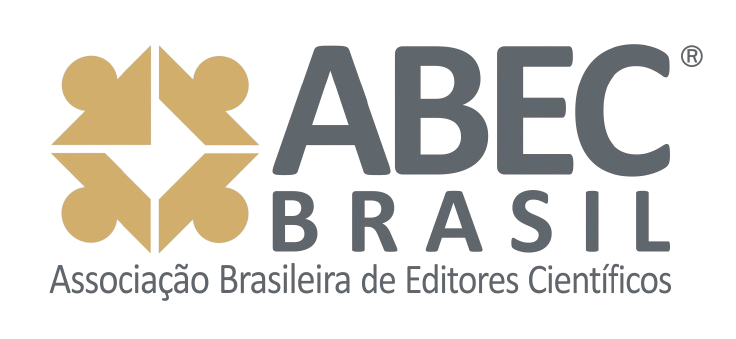O PROCESSO DE INTELIGÊNCIA COMPETITIVA COMO ESTRATÉGIA DE MARKETING NO AGRONEGÓCIO
DOI:
https://doi.org/10.24883/IberoamericanIC.v7i3.266Keywords:
Agronegócio, Marketing, Competitividade, Informação. Inteligência Competitiva, Agribusiness. Marketing, Competitiveness, Information, Competitive intelligenceAbstract
É vital para qualquer organização conhecer seu ambiente competitivo para realização de estratégias. O marketing tem objetivo de agregar valor em todas as atividades organizacionais da organização, sendo um desafio nos dias atuais já que as informações estão se multiplicando e os ambientes estão se tornando cada vez mais complexos como é o caso do agronegócio. No agronegócio o marketing precisa de ferramentas que possibilite uma maior precisão nas informações, pois o setor revela algumas peculiaridades que o diferencia dos demais. Neste sentido a Inteligência Competitiva (IC) torna-se uma ferramenta que busca o aproveitamento das informações no macroambiente e microambiente, proporcionando assim a minimização de riscos e o aproveitamento das oportunidades. Neste sentido, o objetivo do presente artigo é demonstrar a importância da IC como ferramenta para o marketing no agronegócio. A pesquisa teve abordagem exploratória, sendo realizada uma pesquisa bibliografia sobre o tema abordado. Verificou que o marketing pode ser melhor trabalhado com o processo com auxilio do processo de IC, pois dessa forma é possível eleborar ações direcionadas ao seu público de interesse, afinal, por meio da IC é possível buscar informações que proporcione competitividade, permitindo assim, conhecer melhor o ambiente interno e externo da organização no agronegócio.Com isso torna-se possível antever situações de risco e oportunidade. As organizações rurais ao adortar a IC como suporte para marketing podem conhecer melhor seus clientes e seus agentes de interesse, sendo possível definir de maneira mais precisa o seu público alvo, melhorar sua produção, desenvolver novos produtos, identificar os riscos dos concorrentes e os melhores fornecedores e entre outros ganhos. Por fim, sugere-se um modelo que demonstra a importância do marketing no agronegócio com auxílio da IC, que por sua vez, pode agregar maior valor em todas as atividades da organização.
ABSTRACT
THE COMPETITIVE INTELLIGENCE PROCESS AS A MARKETING STRATEGY IN THE AGRIBUSINESS
It is vital for any organization to know its competitive environment for strategizing. Marketing has the objective of adding value to all the organizational activities of the organization, being a challenge in the present day as information is multiplying and the environments are becoming increasingly complex as is the case of the agribusiness. In agribusiness, marketing needs tools that allow greater precision in the information, since the sector reveals some peculiarities that differentiate it from others. In this sense, the Competitive Intelligence (CI) becomes a tool that seeks the use of information in the macroenvironment and microenvironment, thus providing the minimization of risks and the use of opportunities. In this sense, the objective of the present article is to demonstrate the importance of CI as a tool for agribusiness marketing. The research had an exploratory approach, being carried out a research bibliography on the subject approached. He verified that marketing can be better dealt with the process with the help of the CI process, because in this way it is possible to raise actions directed to its interested public, after all, through the CI it is possible to seek information that provides competitiveness, better the internal and external environment of the organization in agribusiness.With this it becomes possible to foresee situations of risk and opportunity. Rural organizations, by embracing CI as marketing support, can better understand their customers and their stakeholders, enabling them to more accurately define their target audience, improve their output, develop new products, identify competitors' risks, and the best suppliers and among other gains. Finally, we suggest a model that demonstrates the importance of marketing in agribusiness with the help of CI, which in turn, can add greater value in all activities of the organization.
Downloads
References
ARAUJO, Marco, Antonio de. Administração de produção e operações: uma abordagem prática. Rio de Janeiro: Brasport, 2009.
ARAÚJO, P. C.; CASTILHO JÚNIOR, N. C. Contribuições da gestão da informação para o subprocesso de coleta do processo de inteligência competitiva. Perspectivas em Gestão & Conhecimento: João Pessoa, v.4, n.2, p.50-66, 2014. Disponível em: <http://periodicos.ufpb.br/ojs2/index.php/pgc/article/view/16731/12247>. Acesso em: 5 abr. 2017.
CIRIBELLI, M. C. Como elaborar uma dissertação de mestrado através da pesquisa ciêntifica. Rio de Janeiro: 7Letras, 2003.
DALFOVO, O.; LUIZ, J. R. Business Intelligence na gestão de negócio como diferencial competitivo: um estudo de caso na área de serviço de atendimento ao cliente. In: DALFOVO, O.; TAMBORLIN, N. Cor(s). Business Intelligence:estudos de casos práticos no uso em gestão de tecnologia da informação como inteligência nos negócios. Blumenau: Clube de autores, p. 19-62, 2017.
DAVENPORT, T.; PRUSAK, L. Ecologia da informação: por que só a tecnologia não basta para o sucesso na era da informação. São Paulo: Futura, 1998a. 316p.
GIL, Antonio Carlos. Como elaborar projetos de pesquisa. 5. ed. São Paulo: Atlas, 2008.
HONORATO, G. Conhecendo o marketing. Barueri: Manole, 2004
JORGE, C.F.B. Gestão da Informação Esportiva no contexto da Inteligência Competitiva em Clubes de Futebol: Um estudo de caso no Marília Atlético Clube. 2013. 325f. Dissertação (Mestrado em Ciencia da Informação) – Universidade Estadual Paulista, Marília/SP. 2013.
JORGE. C. F. B.; VALENTIM. M. L. P. Informação e esporte: a informaçãoesportiva e sua relação com clubes de futebol. Informação &Informação: Londrina, v. 20, n. 1, p.183 – 208, 2015. Disponível em: <http://www.uel.br/revistas/uel/index.php/informacao/article/view/19712/pdf_50> Acesso em: 05 Abril, 2017. DOI: https://doi.org/10.5433/1981-8920.2015v20n1p183
KAY, R. D.; EDWARDS W. M.; DUFFY, P. A. Gestão de propriedades rurais. Porto Alegre: Bookman, 2014.
KOTLER, Philip. Marketing. São Paulo: Atlas, 1996.
LIMA, M. F. et al. Gestão de Marketing. Rio de Janeiro: FGV, 2007, 8. ed.
LAS CASAS, A.L.; BACHA, R. A. F.; CARVALHO, C. M. E. O agronegócio e o marketing rural no Estado de Mato Grosso do Sul. História e Perspectivas: Uberlândia, v. 29, n.55, p. 271-289, 2016. Disponível em:<http://www.seer.ufu.br/index.php/historiaperspectivas/article/view/35787>. Acesso em: 5 abr. 2017.
MACHADO, J. G. de C. F.Estratégias de marketing na indústria de alimentos : o caso dos frigoríficos na região de Presidente Prudente – SP. Gestão e Sociedade: v.3, n.5, 2009. Disponível em: <https://www.gestaoesociedade.org/gestaoesociedade/article/view/691>. Acesso em: 16 maio, 2017. DOI: https://doi.org/10.21171/ges.v3i5.691
MADRUGA, R. P. et al. Admistração de Marketing no mundo contemporâneo. 4 ed. Rio de Janeiro: FGV, 2011.
MARCIAL, E. C.; GRUMBACH, R. J. dos S. Cenários prospectivos: como construir um futuro melhor. 5 ed. Rio de Janeiro: FGV, 2008
MAURRY, P. Inteligência competitiva e decisão empresarial. Ciência da Informação: Brasília, 1993. Disponível em: <http://revista.ibict.br/ciinf/article/view/500/500>. Acesso em: 2 setembro, 2016.
MIGUELES, C. Pesquisa: por que administradores precisam entender disto? Rio de Janeiro: E-Papers, 2004.
MINARELLI, J. A. A inteligência que gera negócios e oportunidades de trablaho. São Paulo: Gente, 2009
MOTA, A. Estratégia competitiva. Curitiba: IESDE, 2009.
NASCIMENTO, N. M. et al. O estudo das gerações e a inteligência competitiva em ambientes organizacionais. Perspectivas em Gestão e Conhecimento: João Pessoa, v. 6, n. Esp., p. 16-28, 2016. Disponível em: <http://www.okara.ufpb.br/ojs2/index.php/pgc/article/view/27381>. Acessoem: 20 maio, 2017.
NEVES, M. F. Marketing no agribusiness. In: (org) ZYBERSZTAJN, D.; NEVES, F. N. (Org). ECONOMIA E GESTÃO DOS NEGÓCIOS AGROALIMENTARES. Décio São Paulo: Pioneira, 2000, p.428.
QUEYRAS, J.; QUONIAM L. Inteligência competitiva. In: (org) TARAPANOFF. K. Inteligência, Informação e Conhecimento. Brasilia: UNESCO, 2006, p. 456.
ROSSÉ, G. F. et al. A eficiência do marketing na cooperativa Tritícola Sepeeense: um estudo de caso. Nucleus: v.13, n.1, 2016. Disponível em <http://www.nucleus.feituverava.com.br/index.php/nucleus/article/view/1600/2028> Acesso em: 15 maio, 2017. DOI: https://doi.org/10.3738/1982.2278.1600
SANTIAGO, Marcelo, Piragibe. Gestão de Marketing. Curitiba: IESDE, 2008.
SANTOS, J. C.; VALENTIM, M. L. P. Gestão da informação em ambientes organizacionais: em foco o setor têxtil e de vestuário. Informações e Profissões: Londrina, v. 4, n. 1, p. 56 – 81, 2015. Disponível em <http://www.uel.br/revistas/uel/index.php/infoprof/article/view/23542> Acesso em: 01 maio, 2017. DOI: https://doi.org/10.5433/2317-4390.2015v4n1p56-81
SIQUEIRA, M. C. Gestão estratégica da informação. Rio de Janeiro: Brasport, 2005.
SILVA, Severino, Francisco, da. Marketing de serviço: fundamentos, análises e praticas no setor de saúde. Maceió: EDUFAL, 2005.
TABACOF, Boris. Espírito de empresário: reflexões para construir uma gestão baseada em valores. São Paulo: Gente, 2009.
TARAPANOFF, K. Informação, Conhecimento e Inteligência em corporações: relações e complementariedade. In: TARAPANOFF, K. (Org). Informação, Conhecimento e Inteligência em corporações. Brasília: IBICT, UNESCO, 2006.
TAVARES, L. C. et al. Estratégias de marketing na área de sementes. Arq. Inst. Biol: v.83, p. 1-9, 2016. Disponível em: <http://189.126.110.61/arqib/article/view/35071>. Acesso em: 20 maio 2017.
TEXEIRA, T. M. C.; VALENTIM. M. L. P. Inteligência competitiva: um estudo teórico. Perspectivas em Gestão & Conhecimento: João Pessoa, v. 6, p. 3-15,2016. Disponível em: <http://periodicos.ufpb.br/ojs2/index.php/pgc/article/view/27392>. Acesso em: 6 abr. 2017.
VALENTIM, M. L. P. et al. O processo de inteligência competitiva em organizações,DataGramaZero, Rio de Janeiro, vol.4., n°3, 2003. Disponível em: <http://www.dgz.org.br/jun03/Art_03.htm>. Acesso em: 30 agosto. 2016.
VALENTIM. M. L. P. Gestão da informação e gestão do conhecimento em ambientes organizacionais: conceitos e compreensões. Tendências da Pesquisa Brasileira em Ciência da Informação, v.1, n.1, 2008. Disponível em: <http://inseer.ibict.br/ancib/index.php/tpbci/article/viewPDFInterstitial/3/14>. Acesso em: 03 mar. 2017.
WOIDA, L. M. Cultura informacional voltada à inteligência competitiva organizacional no setor de calçados de São Paulo. 2007. 255f. Dissertação (Mestrado em Ciência da Informação) – Faculdade de Filosofia e Ciências, Universidade Estadual Paulista, Marília, 2007.
Downloads
Published
How to Cite
Issue
Section
License
Authors who publish with this journal agree to the following terms:
1. Authors who publish in this journal agree to the following terms: the author(s) authorize(s) the publication of the text in the journal;
2. The author(s) ensure(s) that the contribution is original and unpublished and that it is not in the process of evaluation by another journal;
3. The journal is not responsible for the views, ideas and concepts presented in articles, and these are the sole responsibility of the author(s);
4. The publishers reserve the right to make textual adjustments and adapt texts to meet with publication standards.
5. Authors retain copyright and grant the journal the right to first publication, with the work simultaneously licensed under the Creative Commons Atribuição NãoComercial 4.0 internacional, which allows the work to be shared with recognized authorship and initial publication in this journal.
6. Authors are allowed to assume additional contracts separately, for non-exclusive distribution of the version of the work published in this journal (e.g. publish in institutional repository or as a book chapter), with recognition of authorship and initial publication in this journal.
7. Authors are allowed and are encouraged to publish and distribute their work online (e.g. in institutional repositories or on a personal web page) at any point before or during the editorial process, as this can generate positive effects, as well as increase the impact and citations of the published work (see the effect of Free Access) at http://opcit.eprints.org/oacitation-biblio.html
• 8. Authors are able to use ORCID is a system of identification for authors. An ORCID identifier is unique to an individual and acts as a persistent digital identifier to ensure that authors (particularly those with relatively common names) can be distinguished and their work properly attributed.













